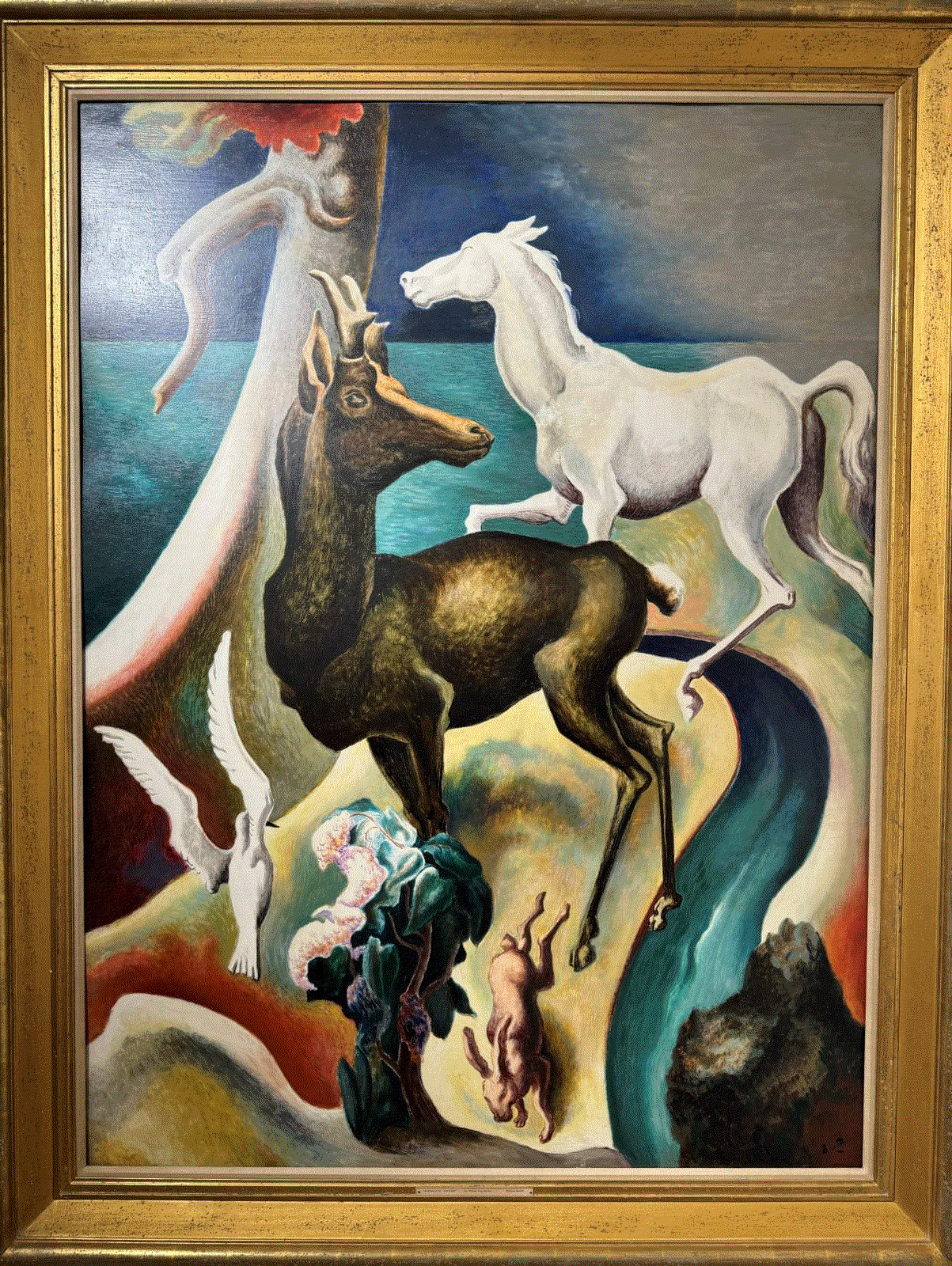I have a sort of inner conviction that for all the possible limitations of my mind and the disturbing effects of my processes, for all the contradicting struggles and failures I have gone through, I had come to something that is in the image of America and the American people of my time.
– Thomas Hart Benton
Revolutions: Art from the Hirshhorn Collection, 1860-1960 looks at the innovations and evolution of art at a time in history when the world was experiencing changes in technology, science and politics.
The art movements during these hundred years went from Impressionism to Symbolism, Post-Impressionism, Art Nouveau, Fauvism, the Ashcan School, Expressionism, Cubism, Futurism, Suprematism, Constructivism, the Dada Movement, De Stijl, Bauhaus, Surrealism, Social Realism, Abstract Expressionism, Color Field Painting, Neo-Dada, Kinetic Art, the Gutai Group, Pop Art, Fluxus and Performance Art.
World War l and World War ll led some artists to comment on social and political issues, others to deal with more personal subjects and others to explore the purely visual elements of their artwork.
Included in the exhibit at the Hirshhorn are works by Pablo Picasso, Milton Avery, Hans Hofmann, George Grosz, Adolph Gottlieb, Alexander Calder, Joan Miro, Robert Rauschenberg, Thomas Hart Benton and Loie Hollowell, whose works are available at Surovek Gallery.
The artworks in the exhibit are from the Hirshhorn’s vast collection, and include contemporary works that go beyond 1960, a testament that works of the late-and nineteenth and early-twentieth century artists are still relevant today.
It is interesting to see a show that includes both Thomas Hart Benton (1889-1975) and Loie Hollowell (b. 1983). Hollowell was born almost 100 years after Benton. Their world views might seem disparate, but there are commonalities.
Benton called himself an “enemy of modernism” and yet he taught and mentored Jackson Pollock and treated the young artist like a son. He spent over twenty years in New York before embracing Regionalism and returning to his home state of Missouri. He was critical of museums, galleries and art critics but also used his art to protest the KKK, lynching, and fascism during the 1930s and 1940s.
Like Benton, Hollowell left her hometown (she was raised in Northern California) and now lives and works in New York. Her works have been described as abstract body landscapes that denote sexuality, pregnancy and birth. Benton’s early Self Portrait with Rita, 1922, portrays a muscled Benton and scantily-clad Rita. Many of the depictions in Benton’s work, of people dancing and naked, or near-naked, were considered too sensual inappropriate by some critics. His depiction of the KKK in his Indiana mural is still a topic of controversy.
Also, like Benton, Hollowell's career is intertwined with her family life, focused on her husband and two children. Benton was married to his wife, Rita for almost 55 years, until his death. Rita died eleven weeks after her husband. They had two children.
Thomas Hart Benton and Loie Hollowell will never meet, but their artworks complement each other well, both at the Hirshhorn and at Surovek Gallery.
Revolutions: Art from the Hirshhorn Collection, 1860-1960 is currently on view and will run through April 20, 2025.
Please contact us if you would like more information about the works of Thomas Hart Benton, Loie Hollowell or any of the other fine artists whose works are available at Surovek Gallery.
References:
Matha Schwendener. Loie Hollowell’s Abstract Body Landscapes. The New York Times. November 26, 2015.
Indiana University, IU Art Museum opens doors to conservation of famed Thomas Benton murals. IU News Room. July 27, 2009.









